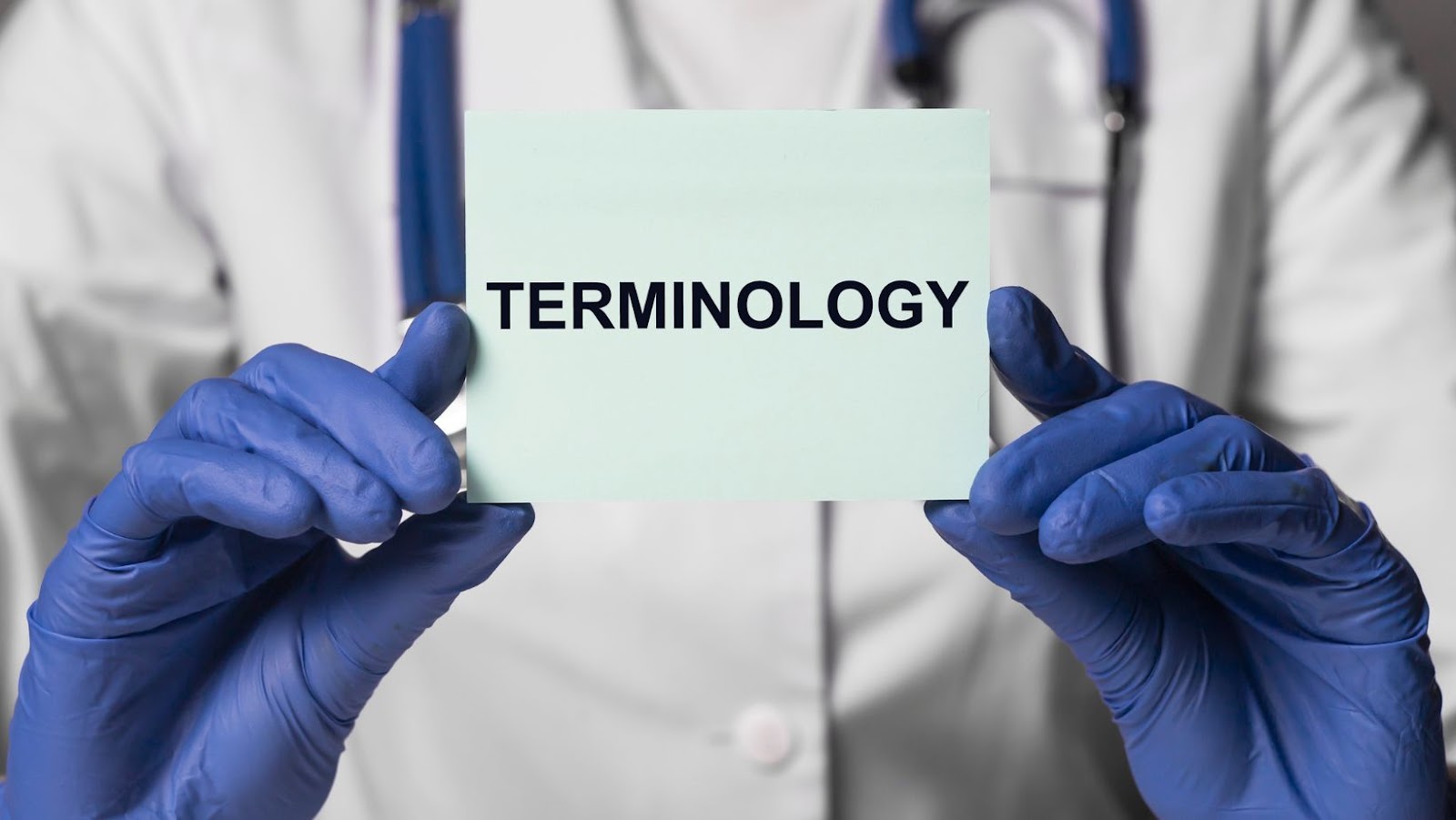
As a parent, your child’s health is going to be your top concern, but all of the different medical terminology can become overwhelming. Here’s a short list of medical suffixes/prefixes, root words, abbreviations, and other medical terms to be familiar with.
Medical Terms
Acute and Chronic
Acute and chronic are used to describe how medical conditions begin. Acute conditions begin abruptly but don’t last long. On the other hand, chronic conditions are recurring and persistent.
Benign and Malignant
Benign and malignant are the two most common terms used to describe tumors or lumps of tissue from cell overgrowth. Malignant tumors are cancerous, while benign tumors are noncancerous.
Contusions and Abrasions
Contusions and abrasions are some of the most common injuries seen in childhood. Kids are very active at home and school, so they’re likely to get an abrasion (minor cuts and scrapes) and/or contusion (bruise) if they fall.
Embolism
Embolisms are more common in adulthood, as they’re arterial blockages (blood clots). Blood clots can cut off blood circulation to the heart (causing a heart attack) or blood/oxygen circulation to the brain (causing a stroke).
Inpatient and Outpatient
Inpatient and outpatient refer to the length of stay in a medical facility. As the name suggests, inpatient centers (such as hospitals) require patients to stay inside the facility for further observation. Outpatient centers provide care and release patients on the same day.
Prognosis and Relapse
Prognosis and relapse both refer to a disease or other medical condition. Prognosis is the prediction of how a disease may progress and respond to treatment.

Relapse refers to the disease returning after the patient recovers from it.
Vaccine
Vaccines are substances created to stimulate antibodies to provide immunity against one or a group of related diseases. The COVID-19 vaccines are some of the most recent ones, while the smallpox vaccine is a vaccine that is no longer in use.
Medical Suffixes and Prefixes
You’re likely already aware of many medical suffixes and prefixes, as they follow the same structural rules of the English language, which are largely derived from Latin. A/an- (without), dys- (difficult), and poly- (many) are examples of medical prefixes. Examples of medical suffixes include:
● -ology (the study of)
● -osis (abnormal)
● -ostomy (to cut into)
● -pathy (disease)
● -plasty (surgical repair)
Medical Root Words
Cardio and Pulmono
Cardio refers to the heart, while pulmonary refers to the lungs. These two organs are often combined in the medical field, as they are connected. This is where the terms cardiology (study of the heart and blood vessels) and pulmonology (study of the lungs and respiratory system) come from.
Derma
Derma (or derm) refers to the skin, and this is where dermatology (the study of skin, nails, and hair) comes from. “Derm” can also be found in other medical terms relating to the skin, such as “epidermis” (the outer layer of skin)
Gastro
Gastro refers to the stomach, and gastroenterology is the study of the entire digestive system, including the mouth and esophagus, and also other organs, such as the intestines.
Hemato and Onco
Hemato refers to blood, while it once refers to a tumor or mass. Hematology (the study of blood and blood disorders) and oncology (the study of cancerous and non-cancerous growths) are often combined in medicine.
Myo and Osteo
Myo (muscles) and osteo (bones) are also often combined in medicine because of the musculoskeletal system. As the name suggests, it is made up of the muscles and bones, but also sometimes tissues, tendons, and joints, such as the wrists, ankles, shoulders, and knees.
Sclerosis
Sclerosis refers to the abnormal hardening of body tissue. This can be the tissue of the central nervous system (multiple sclerosis) or other areas of the body.
Medical Abbreviations
ALS vs. BLS
ALS stands for advanced life support, and BLS stands for basic life support. As the name suggests, ALS is more advanced and is usually only used by medical professionals because it involves giving injections and/or administering medications.

BLS is something that anyone can learn— even online through websites like protrainings.com/courses/bls/ because it doesn’t require injections or medications.
Bl Wk
Bl Wk stands for blood work. Blood work gives you more information about your organs, such as the heart, liver, and kidneys. It will also give insight into any vitamin/mineral deficiencies.
ED/ER and OR
All hospitals have an ED (emergency department) or ER (emergency room, and they also have an OR (operating room) where surgeries are performed. ED/ERs are where patients in dire need of medical attention are treated.
N/ICU
ICUs (intensive care units) are departments within hospitals that provide specialized care to their patients. NICUs (neonatal intensive care units) are specialized ICUs that care for premature infants.
Rx
Rx is the abbreviation for prescription, but it can also be used as an abbreviation for other types of treatment.
Understanding medical terminology can make medical emergencies seem a little less overwhelming.























